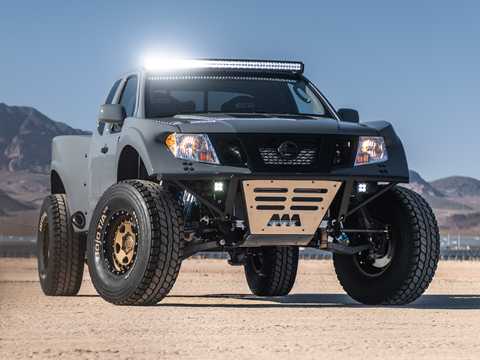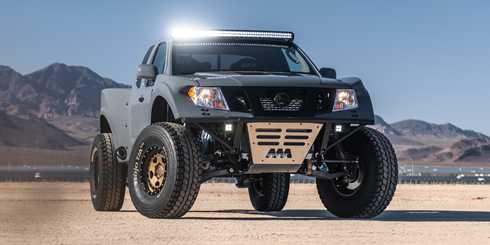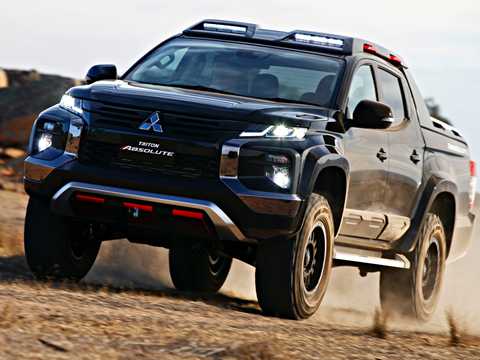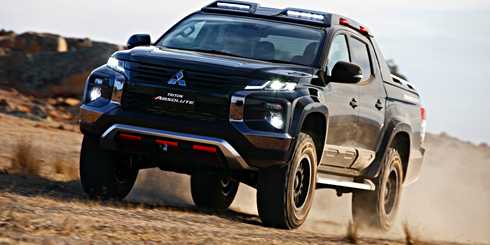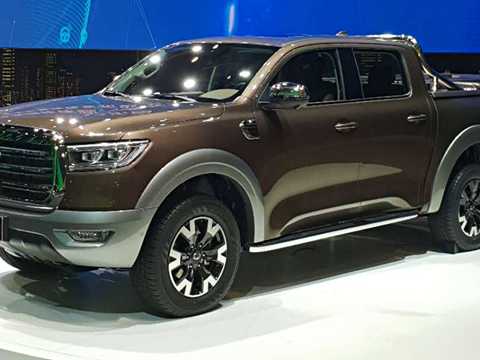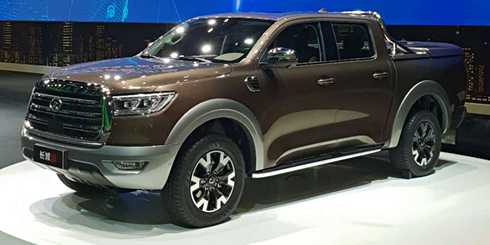For the updated MkII Ranger lineup Ford wisely followed the mantra: “If it ain’t broke, don’t fix it.” Yes the major update includes a new front-end for an even tougher look, improved engines, a revised interior and extra technology, but Ford didn’t touch the core of what many consider is Australia’s best ute.
Adaptive cruise control and lane departure warning are just two of the advanced technologies now available in some Ford Ranger models. And again the development work was undertaken by the advanced engineering team at Ford Australia.
Ford Australia sold 26,619 Rangers last year – 22 per-cent up on 2013 – and it was actually Australia’s sixth best-selling nameplate overall. Backgrounding the changes for the MkII update was considerable feedback from customers rather than wholesale changes dreamt-up in meeting rooms.
Of course it’s a different environment now for Ford Ranger with the all-new Nissan NP300 Navara and Mitsubishi Triton already on-sale and the updated Mazda BT50 and all-new Toyota HiLux just around the corner. But have no doubt - the updated Ranger has the artillery to go toe-to-toe with any rival.
Ford Ranger Overview
There are 37 variants in the updated Ford Ranger lineup – 11 4x2 models and 26 4x4 versions. Engines remain the 2.2-litre and 3.2-litre turbo-diesels (but with improvements) and prices start from $27,390.
Immediately obvious is the revised front-end. Not visible are significant changes underneath to provide even better levels of refinement and steering/suspension changes which have sharpened-up Ranger’s already sharp driving dynamics.
Critically, Ford Ranger’s towing capacity (up to 3,500kgs), wading depth (up to 800mm), approach, departure and breakover angles (4x4 models) remain unchanged. “The updated Ranger is tougher, smarter and more efficient but provides the same rugged capability,” revealed Ian Foston, the chief product engineer for both Ranger and its SUV sibling called the Everest (which will be launched locally in a few months).
Ford Ranger Engine
“Both engines got upgrades focusing on NVH, emissions and fuel consumption,” Ian Foston explained. “New, smaller turbochargers including the Honeywell variable vane/variable nozzle turbocharger, exhaust gas recirculation, different fuel injectors and fluid-filled engine mounts.”
Also part of that story was the adoption of electric power-assisted steering (no hydraulic drain on the engine results in enhanced fuel consumption).
So we have the four-cylinder 2.2-litre turbo-diesel with 118kW of power at 3200rpm and peak torque of 385Nm from 1600rpm-2500rpm and the five-cylinder 3.2-litre turbo-diesel with 147kW of power at 3000rpm and peak torque of 470Nm from 1750rpm to 2500rpm.
Transmissions are a six-speed manual or a six-speed intelligent automatic.
Combined-cycle fuel consumption scores 7.6l/100kms for the 2.2-litre or 9.6l/100kms for the 3.2-litre
Ford Ranger The Interior
Subtle but significant changes are obvious inside the MkII Ford Ranger. The highlights are a new horizontal dashboard design and new instrument clusters.
We were particularly impressed by the dual TFT instrument cluster in the range-topping Wildtrak model. There are different formats and the one which includes the rev-counter (critical for off-road and towing applications) sees a smaller, colourful tachometer displayed alongside the speedometer (conversely if you don’t need the rev-counter you can switch displays – very clever).
Ford Ranger Wildtrak also scores a high-resolution eight-inch touchscreen and unique orange-hued sports seats.
Ford Ranger XLT models and above run leather-wrapped steering wheels and gear levers, satellite navigation, Ford’s SYNC 2 infotainment system and digital radios. A Tech Pack option adds a reversing camera, adaptive cruise control with forward collision alert, driver impairment monitor, lane-keep assist and lane departure warning (the reversing camera and front park assist are standard in the Wildtrak).
We were a tad disappointed the updates for Ford Ranger’s interior did not introduce telescopic adjustment for the steering wheel (Mitsubishi Triton has it). Ford says this was not listed as a priority in customer feedback.
Ford Ranger Exterior & Styling
Given the exterior changes centered on the front-end, Ford’s designers have achieved a remarkable change in the looks of the MkII Ranger. Ford says the Ranger should always look like a Ford truck so from that point of view the design team wasn’t starting with a blank canvas and, with continual dialogue between the global design studios, the Aussie creation shares many cues with the larger F-Series pickups from North America.
That front-end is bolder thanks to a more prominent version of Ford’s trapezoidal grille (XLT and upwards in chrome which looks great), sharp, recessed headlights (projector lights for XLT and Wildtrak), new fog-lights, new front fenders and new front fender vents. Ford Ranger tragics will also pick a tiny dimple in the fuel filler cap (a response to customer feedback for easier ‘popping’).
Ford says the XLT model is Ranger’s luxury version and the range-topping Wildtrak is ‘sports-luxury’. Hence some noticeable differences like Wildtrak’s 18-inch alloy wheels, side steps and sports bar.
Ford Ranger On The Road
One of the standout features of the current generation Ford Ranger has always been its refinement. Impressively, right from the get-go when we drove the new Mk II models, we noticed further improvements in that area (EPAS reduces engine noise and there is extra insulation under the bonnet and on both sides of the firewall) – even tyre noise (often a negative in utes) was hardly noticeable.
Likewise the refined ride – again we would have thought this was already a Ranger strong point. But Ford reckoned while dynamically the Ranger was good, it could ride even better so subtle suspension changes addressed that.
Over two days www.carshowroom.com.ay drove the entry-grade Ford Ranger XL (2WD Double Cab Hi Rider 2.2 automatic), an XLT Super Cab Hi Rider (2WD 3.2 automatic), and XLT Double Cab (4x4 3.2 automatic) and the range-topping Wildtrak (4x4 3.2 automatic). Our route north of Melbourne covered all sorts of road conditions, some bush tracks and a specialist 4x4 test track.
To be honest it had been a long time since we’d driven the 2.2-litre Ranger and it proved to be a secret weapon this time around. Unless you’re planning on hauling some heavy loads, the smaller engine may prove to be your best bet – more than enough performance, now with extra refinement and with fuel consumption benefits over the larger engine.
Of course it’s acknowledged that Ford’s five-cylinder 3.2-litre turbo-diesel is a cracking engine – enough grunt to tow Tasmania back to the mainland as they say. The extra refinement courtesy of the Ranger MkII upgrade is well received by the larger engine and again the total package is impressive.
Same for the driving dynamics. Regular readers of www.carshowroom.com.au will know we rank the Ranger as the best ute for ride and handling – the all-new Mitsubishi Triton edged closer in this department but, with the updated suspension, the Ranger has eased further in front.
None of the Ford Rangers we drove had any load in the back but of all the utes they were the least upset over bumps and maintained a refined level of on-road dynamics (utes are designed to perform best with the cargo area loaded).
Ford Ranger Issues
Our points deduction for the updated Ford Ranger MkII centre on the interior – some of the interior plastic are still too hard and the lack of reach adjustment for the steering wheel.
Ford Ranger Verdict
Ford Ranger is still our favourite ute. While the MkII update isn’t massive in terms of visual changes, critical improvements for driving dynamics, engines and interiors have certainly delivered a better all-round package.
Ford Ranger The Competition
So we’re ranking the Ford Ranger number one but there’s no denying the opposition does have some significant pricing advantages.
Take the all-new Mitsubishi Triton. For us, the all-new model is a game-changer for Mitsubishi – for driving dynamics, Triton has leapt from the rear of the field to give Ranger a close rival. The Triton also boasts reach adjustable steering and isn’t lacking for specification but prices start from $24,490.
Then there’s Nissan’s all-new NP300 Navara. Again a massive improvement over the previous generation and possibly the number one contender in terms of interior space. You’ll need just $26,490 for entry to the NP300 lineup.
As we write the updated Mazda BT50 and all-new Toyota Hi-Lux are just around the corner.


















